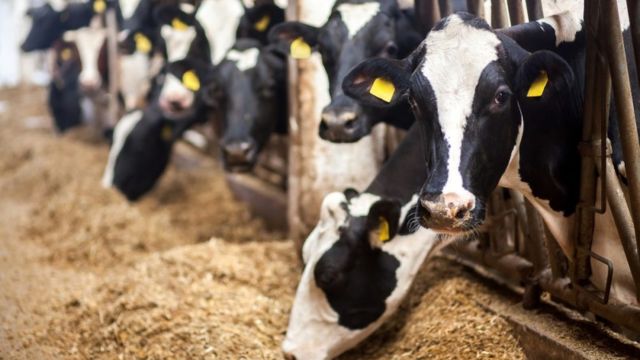The American Association of Bovine Practitioners (AABP) has announced in a letter that they will now refer to the emerging disease event affecting dairy cattle, which originated from highly pathogenic avian influenza (HPAI), as Bovine Influenza A Virus. This decision was made after extensive collaboration with veterinarians, allied organizations, state and federal agencies, diagnostic laboratories, and animal health officials.
“The avian influenza virus Type A H5N1 has been identified as the virus isolated from affected animals in herds displaying similar clinical signs,” explained AABP Executive Director Fred Gingrich, DVM, and President Michael Capel, DVM. Although this virus causes highly pathogenic avian influenza in birds, it does not lead to high morbidity or mortality in cattle, unlike in birds. Therefore, the AABP does not believe it is appropriate to refer to this disease as ‘HPAI in cattle’ or ‘bird flu in cattle’ due to these differences.”
The AABP has decided to refer to the disease as Bovine Influenza A Virus (BIAV) in their communications and materials. They are also urging other organizations, state animal health officials, diagnostic labs, and state and federal agencies to adopt this name to ensure consistency in differentiating the disease across species.
The letter concluded by emphasizing the significance of public understanding in order to maintain consumers’ confidence in the safety and accessibility of beef and dairy products.
USDA’s Animal and Plant Health Inspection Service (APHIS) has confirmed the presence of BIAV in dairy herds across several states. Specifically, BIAV has been detected in dairy herds in Texas, Kansas, Michigan, New Mexico, Idaho, and Ohio.
Federal and state agencies are currently conducting further tests on sick animals and unpasteurized clinical milk samples to determine if HPAI or any other unrelated illness could be causing the symptoms. They are also conducting viral genome sequencing. The affected herds have seen a range of 1% to 20% of clinically sick dairy cattle, with an average of 10% of the milking herd being affected. However, there have been no confirmed reports of death loss in dairy cattle directly linked to these detections. Fortunately, most sick cows start to recover within a few days.
According to the USDA’s Animal and Plant Health Inspection Service (APHIS), wild migratory birds, including pigeons, blackbirds, and grackles, are thought to be the source of infection. These birds have been found dead on the Texas farms where the illness originated. However, the spread of the illness among the Michigan herd suggests that transmission of Highly Pathogenic Avian Influenza (HPAI) between cattle cannot be dismissed.
During a recent meeting, Mark Lyons, the director of ruminant health at USDA, highlighted that the virus could potentially spread from cow to cow during the milking process. This transmission may occur through milk droplets found on employee clothing or gloves, as well as on the suction cups of the milking units.
Tests conducted on milk, nasal swabs, and blood samples from cows at affected dairies have revealed the presence of the virus strain solely in the milk.
According to Lyons, there is no evidence to suggest that cows are actively shedding the virus and directly exposing it to other animals.
Farmers and veterinarians should promptly report any illnesses in cattle to effectively track potential additional cases and mitigate risks for farmers, farmworkers, consumers, and other animals. It is crucial for producers to collaborate with their veterinarians in implementing stricter biosecurity measures. They should also review and limit cattle movements within production systems to prevent the spread of diseases and avoid introducing cattle from known disease areas or infected herds.

